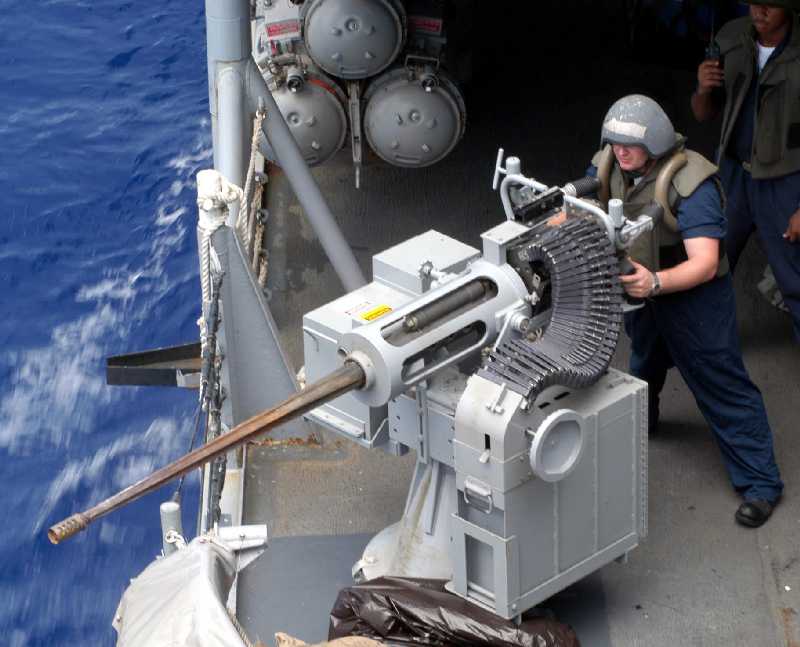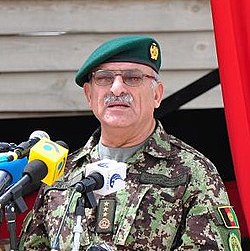Peter Dow
Active member
Introduction and summary
In this short 5-minute video, I reject of the idea of peace talks with the Taliban and present an outline of my proposed strategy to beat the Taliban (and win the war on terror).
VIDEO: Peter Dow's "no" to Taliban's surrender terms. Afpak strategy for victory in war on terror.
[ame="http://www.youtube.com/watch?v=aXMHnu-7ZZk"]Peter Dow's "no" to Taliban's surrender terms. Afpak strategy for victory in war on terror. - YouTube[/ame]
Excerpt transcripts from the video -
The desire for "peace talks" with the enemy is where poor generals with a failed war strategy end up.
Why would NATO and specifically the US want to encourage "peace talks" with the enemy Taliban? Why not simply crush the enemy? What's the political or military issue here that might mean "peace talks" would be part of an exit strategy for the US and allies?
Key failures have been -
VIDEO: BBC Documentary - "SECRET PAKISTAN - Double Cross / Backlash" (2 hours)
[ame="http://www.youtube.com/watch?v=6_SkNUorWhc"]Secret BBC - Pakistan Double Cross on Terrorism - Full - YouTube[/ame]
RECOMMENDED VIDEO - 2 HOURS WELL SPENT!
My 4-point plan to beat the Taliban and win the war on terror
It's never too late to learn lessons and adopt an alternative competent and aggressive military strategy. I have already mentioned the outline points of my plan but I will explain those in a little more here and then provide a lot more detail in subsequent posts.
Point 1
* The US and Western allies ought to name Pakistan, Saudi Arabia and Egypt as "state sponsors of terrorism". We ought to name in addition, the other oil-rich Arab kingdoms who are also financial state sponsors of terrorism. This has implications such as ending bribes and deals with back-stabbing hostile countries and instead waging war against our enemies with the aim of regime change or incapacitating the enemy so that they can do us little more harm. The war could be of varying intensity depending on the enemy concerned and how they respond to our initial attacks, whether they wish to escalate the war or surrender to our reasonable demands.
Point 2
* We need to take the fight to the Taliban leadership wherever they are based in Pakistan. For example, there ought to be drone strikes on the University of Jihad. (Darul Uloom Haqqania, Akora Khattak, Pakistan) In addition, we ought to employ aerial bombing of all other bases for the Taliban in Pakistan. This may have to be extended to include certain Pakistani state bases which are supporting the Taliban - such as the Pakistani ISI headquarters mentioned a lot in the BBC documentary "SECRET PAKISTAN". If this is not handled very carefully, it could escalate into open war with the Pakistani military. I will explain how to manage Pakistan later.
Point 3
* We ought to seize control of Pakistani, Egyptian, Saudi and Iranian TV satellites and use them to broadcast propaganda calling for the arrest of all involved in waging terrorist war against the West. Often, these satellites are made, launched and maintained by Western companies and should be easy to take over. Other satellites provided to the enemy by non-Western countries could be jammed or destroyed. Air strikes against the enemy's main terrestrial TV transmitter aerials is another option to silence enemy propaganda.
Point 4
* When occupying territory, always ensure secure bases and supply routes from one base to another. I will provide a lot of details about how this can be done militarily.
In this short 5-minute video, I reject of the idea of peace talks with the Taliban and present an outline of my proposed strategy to beat the Taliban (and win the war on terror).
VIDEO: Peter Dow's "no" to Taliban's surrender terms. Afpak strategy for victory in war on terror.
[ame="http://www.youtube.com/watch?v=aXMHnu-7ZZk"]Peter Dow's "no" to Taliban's surrender terms. Afpak strategy for victory in war on terror. - YouTube[/ame]
Excerpt transcripts from the video -
Scott Pelley, CBS News said -
"Another part of the U.S. strategy involves getting the Taliban to hold peace talks with the Afghan government. Clarissa Ward spoke with some Taliban representatives where they live, in Pakistan. "
Clarissa Ward, CBS News said -
"They call him the "Father of the Taliban," one of Pakistan's most well-known and hard-line Islamists.
We visited Sami ul Haq at his religious school near the Afghan border. Many Afghan Taliban leaders and fighters studied there, earning it the nickname the "University of Jihad." ..
The desire for "peace talks" with the enemy is where poor generals with a failed war strategy end up.
Why would NATO and specifically the US want to encourage "peace talks" with the enemy Taliban? Why not simply crush the enemy? What's the political or military issue here that might mean "peace talks" would be part of an exit strategy for the US and allies?
Key failures have been -
- Weak strategic thinking and planning by US and then NATO generals has dragged out the Western intervention in Afghanistan since 2001 and caused far more casualties to our soldiers than was ever necessary.
- The military general staff has lacked vision about the enemy and failed to comprehend and react appropriately to intelligence reports that Al Qaeda, the Taliban and other jihadi terror groups are proxies for hostile states, typically managed from Pakistan and funded from Saudi Arabia.
VIDEO: BBC Documentary - "SECRET PAKISTAN - Double Cross / Backlash" (2 hours)
[ame="http://www.youtube.com/watch?v=6_SkNUorWhc"]Secret BBC - Pakistan Double Cross on Terrorism - Full - YouTube[/ame]
RECOMMENDED VIDEO - 2 HOURS WELL SPENT!
- Military strategic essentials have been neglected, such as - when occupying territory, always ensure secure supply routes from one strong point to another. Instead NATO-ISAF forces in Afghanistan have been deployed in isolated bases, deployed more like tethered goats as bait for the enemy than a conquering or liberating army.
- Some combination of military incompetence by the generals and a preference for appeasement on the part of the civilian political leadership has perversely left the West bribing our enemies within the Pakistani terrorist-proxy-controlling state and continuing business-as-usual with our enemies in the Saudi jihadi-financing state.
My 4-point plan to beat the Taliban and win the war on terror
It's never too late to learn lessons and adopt an alternative competent and aggressive military strategy. I have already mentioned the outline points of my plan but I will explain those in a little more here and then provide a lot more detail in subsequent posts.
Point 1
* The US and Western allies ought to name Pakistan, Saudi Arabia and Egypt as "state sponsors of terrorism". We ought to name in addition, the other oil-rich Arab kingdoms who are also financial state sponsors of terrorism. This has implications such as ending bribes and deals with back-stabbing hostile countries and instead waging war against our enemies with the aim of regime change or incapacitating the enemy so that they can do us little more harm. The war could be of varying intensity depending on the enemy concerned and how they respond to our initial attacks, whether they wish to escalate the war or surrender to our reasonable demands.
Point 2
* We need to take the fight to the Taliban leadership wherever they are based in Pakistan. For example, there ought to be drone strikes on the University of Jihad. (Darul Uloom Haqqania, Akora Khattak, Pakistan) In addition, we ought to employ aerial bombing of all other bases for the Taliban in Pakistan. This may have to be extended to include certain Pakistani state bases which are supporting the Taliban - such as the Pakistani ISI headquarters mentioned a lot in the BBC documentary "SECRET PAKISTAN". If this is not handled very carefully, it could escalate into open war with the Pakistani military. I will explain how to manage Pakistan later.
Point 3
* We ought to seize control of Pakistani, Egyptian, Saudi and Iranian TV satellites and use them to broadcast propaganda calling for the arrest of all involved in waging terrorist war against the West. Often, these satellites are made, launched and maintained by Western companies and should be easy to take over. Other satellites provided to the enemy by non-Western countries could be jammed or destroyed. Air strikes against the enemy's main terrestrial TV transmitter aerials is another option to silence enemy propaganda.
Point 4
* When occupying territory, always ensure secure bases and supply routes from one base to another. I will provide a lot of details about how this can be done militarily.
Last edited:


















